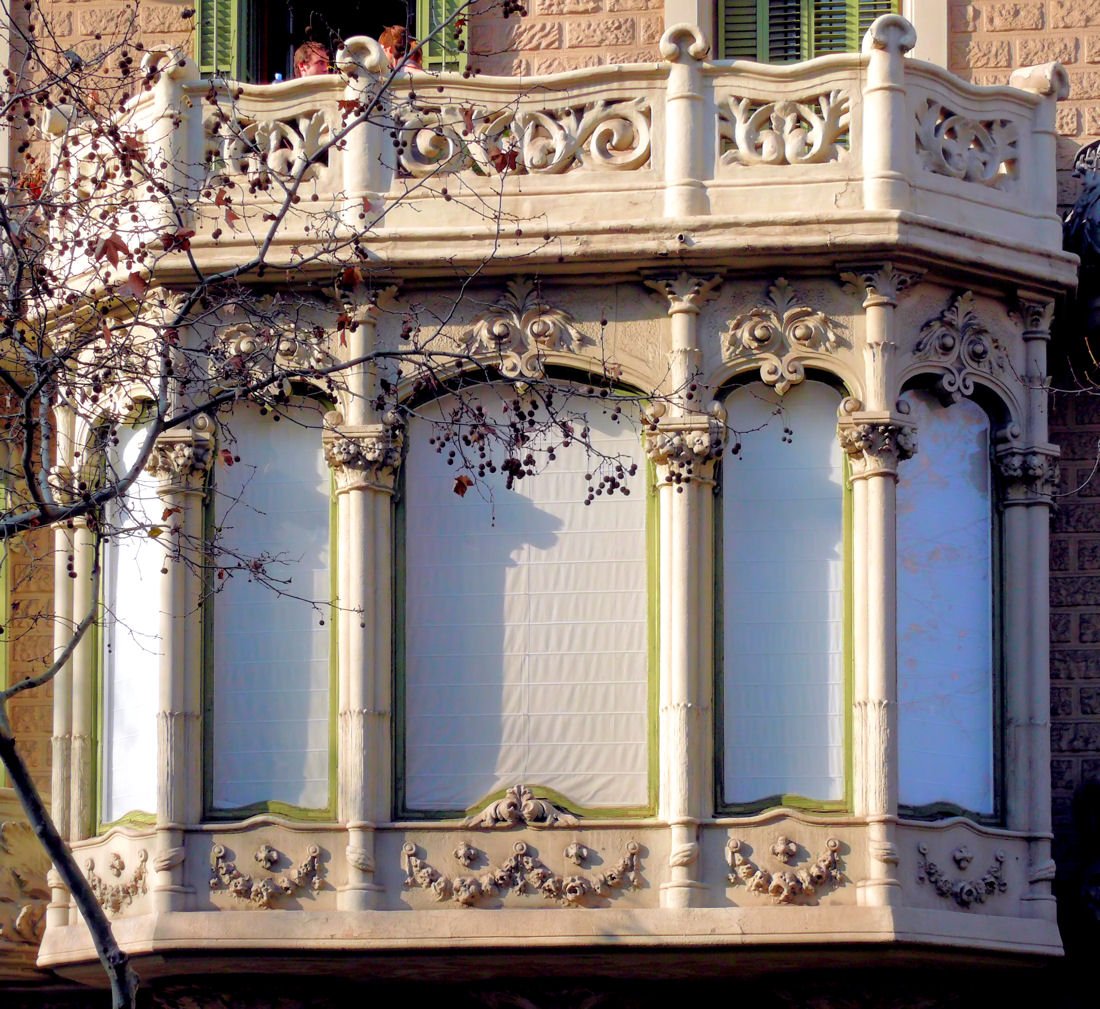#1769. Elegant Art Nouveau Bay Window with Decorative Façade and Balcony Railing
The photograph captures a magnificent example of Art Nouveau (or possibly eclectic) architecture from the late 19th to early 20th century. We see an exquisite bay window made of light-colored stone with rich decorative elements. The façade demonstrates skilled stonework with the curvilinear, fluid forms characteristic of its era.
Particularly noteworthy is the upper section of the bay window — an elegant balcony railing with a wave-like profile and intricate openwork. The decorative elements include botanical motifs and scrolls typical of Art Nouveau. The columns supporting the bay window feature richly decorated capitals with floral ornaments. The lower register of the façade is adorned with garlands and festoons — elements from classical tradition, highlighting the eclectic nature of the composition.
The window frames are finished with thin green outlines, creating a pleasant contrast with the white stone. This technique accentuates the architectural composition and adds expressive quality. In modern façade design, similar details can be interpreted using more minimalist forms while maintaining the principle of contrasting elements and attention to detail.
On the right, part of the brick masonry of the main building is visible, indicating that the bay window is a projecting element of the façade. This technique not only increases the usable interior space but also enriches the architectural composition of the building, creating an interplay of light and shadow on the façade.
